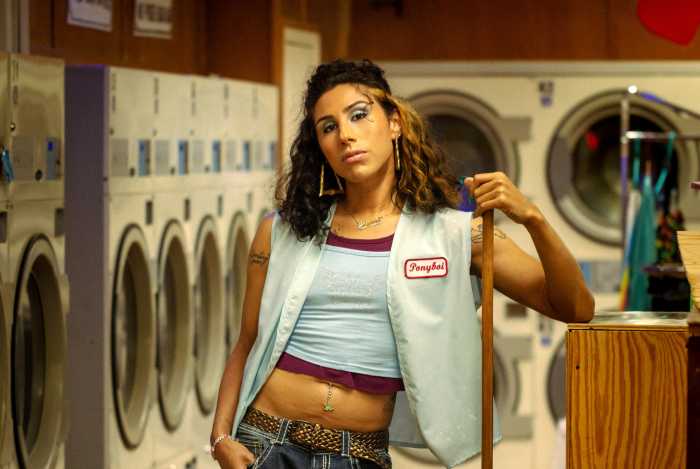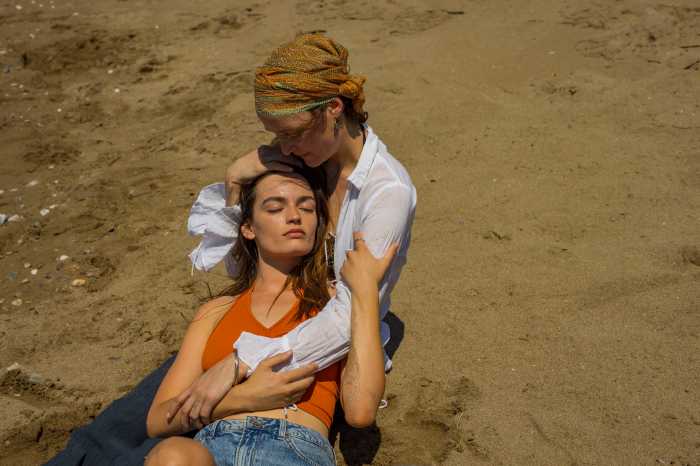BY IOANNIS MOOKAS | Midway between the epic Indian-hating of “The Searchers” (1956) and the baroque half-breed caricature of “Nevada Smith” (1966) there appeared, from Hollywood's margins, a movie about Indians – real American Indians, not bronzed whites – unlike any before it, and comparable to very few since.
“The Exiles” (1961) was the first feature directed by British-born Kent Mackenzie, which evolved from the shooting of his University of Southern California's film school thesis, “Bunker Hill-1956.” Once a swank redoubt of terraced gingerbread mansions steeply perched 300 feet above Los Angeles' old downtown, Bunker Hill had, by Mackenzie's arrival, long since lapsed into the mazy clapboard slum iconically seen in such films noirs as “Night Has a Thousand Eyes” (1948) and “Kiss Me Deadly” (1955).
Unmoored Indians roam vanished LA in recovered indie gem.
While interviewing aged pensioners (“with faces like lost battles,” wrote Raymond Chandler) consigned to eventual expulsion under redevelopment plans approved by the city in 1951, Mackenzie also came to know well several of the young American Indians scraping by in the crumbling SROs, part of Bunker Hill's mixture of Mexicans, Filipinos, and other working-class immigrants.
THE EXILES
Directed by Kent Mackenzie
Milestone Films
Opens Jul. 11
IFC Center
Struck by the notion for a film about their transit from distant reservations to the alluring, impervious city, Mackenzie's concept grew through collaborative alchemy into the plangent, turbulent nocturne of “The Exiles.”
One way to gauge its departure from Hollywood's contemporaneous norms for portraying Indians would simply be to recall “Flaming Star,” with Elvis moping in redface, released the year before “The Exiles”'s 1961 debut at Venice. But a more revealing measure of Mackenzie's achievement might be Delbert Mann's biopic “The Outsider,” also from 1961, with Tony Curtis as Ira Hamilton Hayes, the Pima Marine corporal who partakes in raising the U.S. flag on Iwo Jima in 1945, vaults briefly to fame, dies in dereliction, and goes to a hollow full-dress burial at Arlington. (Hayes was redeemed for posterity in “Flags of Our Fathers.”)
Whereas “The Outsider” pushes its late-classical mise-en-scène to bruising ends, and finally to excess, in tracking Hayes' early dislocation, adult alienation, and grim decline, “The Exiles” wholly eschews fulsome tragedy and, even when recording squander and dissolution, never stoops to pity. Presumably this owes to the performers' organic co-authorship of the film, having developed the scenario and improvised much of the dialogue in tandem with Mackenzie. The unsparing portraits of these “exiles” are, to a startling degree, the ones they wish to present us – this the film's vital difference.
The film opens with still photographs by Edward S. Curtis, close-ups of Indian faces alternating with tableaux of mounted braves silhouetted against ridge and sky, or buckskin tipis on dusty plains, and the like, as a male narrator tells of the “ordered freedom” of their lost dominion. A Curtis portrait of a baby in its papoose dissolves to the still image of Yvonne (Yvonne Williams), a grave young beauty with mile-high cheekbones. A brief montage of the other main players then cuts to the title sequence of stark white letters over Bunker Hill's ruins, to drum and chant on the soundtrack.
Creamy exteriors of the Angel's Flight funicular alighting at the buzzing intersection of Third and Hill Streets move at once inside the central market, a whorl of potatoes flying into paper bags, mackerel sparkling on ice beds, citrus pyramids, and a bobbing sea of shoppers. The camera finds Yvonne, introspectively watching a whisk slowly churning batter, framed within the frame by the chrome lip of a display case. Alone and pregnant, striking and solemn in a plain white felt coat, she strolls the market, alluding in voiceover to her hopes for her child's improved lot.
Climbing the hill with the groceries – her purse doesn't cover tram fare – she walks in the tattered screen door to find her young husband, Homer (Homer Nish), and a friend splayed on couch and easy chair, unhurriedly reading the funnies. A third pal is zonked in the bedroom.
While Yvonne fixes chops and peas in the kitchenette, more friends, led by rascally Tommy (Tommy Reynolds), pile in, and the party's started. Another idle evening becomes another joshing, cadging, scuffling all-night bender.
After dark, Yvonne gets dumped at a double feature while Homer and Tommy's crew peel off in someone's convertible down a neon flume. Although the action shifts to the guys' hard-drinking trawl through downtown's seamy byways, the film keeps skipping back to mournful Yvonne, absently watching an offscreen Sterling Hayden, or later wandering past storefront displays. The cinematography pulls night's blanket close around her, and under the 2 a.m. streetlamps she glows like an offshore derrick on fire.
The night proceeds in ragged incidents, as the kids get steadily more sauced. Homer takes off with his bud Rico (Rico Rodriguez) in search of a card game. En route, a bartender hands Homer a letter from the reservation, delivered care of the bar. While Rico's buying a quart, Homer steals a look on the street corner, and the enclosed snapshot of his folks induces a brief leavening trance, a dappled vision of darting children and a teenage sister nuzzling a pup beneath a tree, beside their softly chanting father.
Back downtown, Tommy macks like crazy on Claudine (Clydean Parker), dancing and playing air piano for her, finally coaxing her into a spin, with her friend Mary (Mary Donahue) riding shotgun and Tommy's wingman at the wheel. They pull into a filling station. As an Anglo attendant scowls, Tommy and his pal lurch around the parking lot groping Claudine, and Mary suddenly realizes she's extrinsic. She shells out for the gas, but while collecting herself in the restroom gets stranded – the others just split.
Yvonne climbs the steps uphill again, and shares a few hours' respite with a friend down the hall, feeling the baby kick and having good girltalk. The rest converge on Hill X, a scraggly, deserted knob overlooking the city's diamond spokes fanning outward. Drums call and a circle chants. Homer slips into silence, Tommy tries to force himself on Claudine, fights erupt, people dance. Dawn breaks remorseless, and from her friend's window Yvonne at length resignedly watches her husband and his crew shamble home. So starts another day.


































